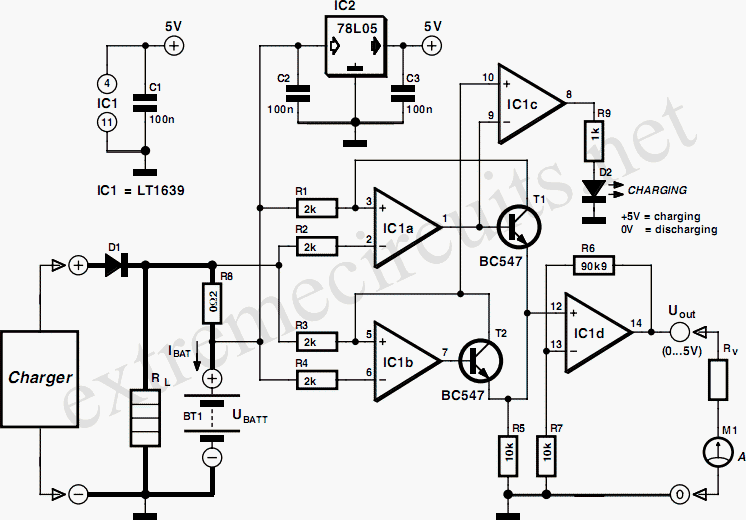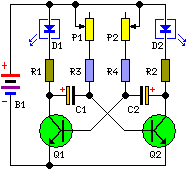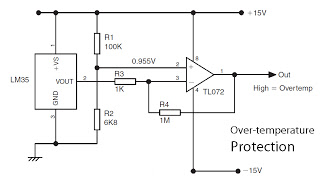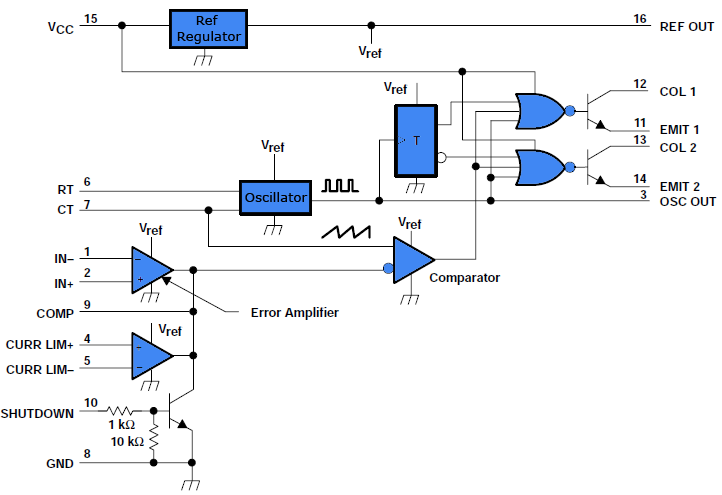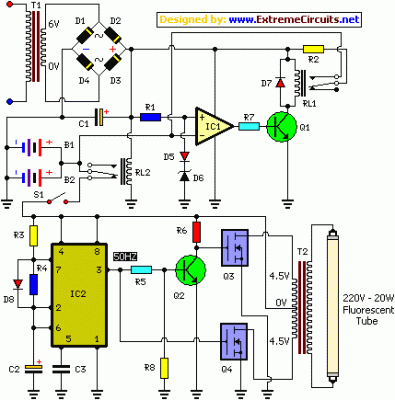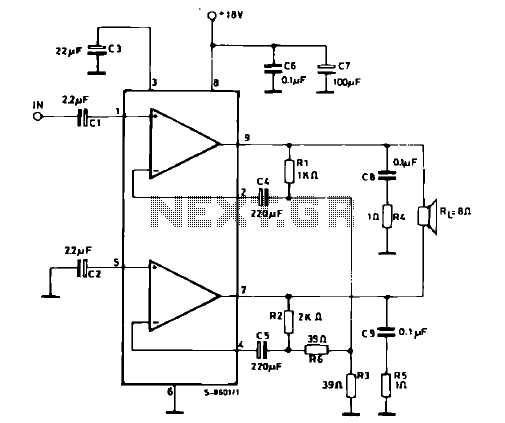
Relay Fuse For Battery Charges Circuit
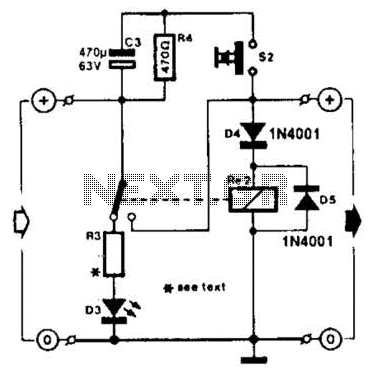
A charged capacitor C3 and a momentary pushbutton switch S2 are utilized to temporarily activate relay RE2. The battery being charged powers the relay to maintain its closed state. Additionally, S2 can energize the relay even if the battery is initially too discharged to do so.
In this circuit, capacitor C3 plays a crucial role in providing a temporary energy boost to relay RE2 when the momentary pushbutton switch S2 is pressed. The capacitor is charged prior to operation, allowing it to store electrical energy. When S2 is pressed, it connects the charged capacitor to the relay, supplying sufficient current to energize it momentarily.
Relay RE2 is designed to maintain its closed state once energized, which is facilitated by the battery under charge. This design ensures that even if the battery voltage is critically low, the relay can still be activated by the energy stored in capacitor C3. This feature is particularly useful in applications where the reliability of relay activation is essential, even under low battery conditions.
The circuit's operation can be broken down into two main phases: the charging phase, where capacitor C3 is charged from the battery, and the activation phase, initiated by pressing switch S2. During the charging phase, the capacitor accumulates energy until it reaches a threshold sufficient to activate the relay. In the activation phase, pressing S2 discharges the capacitor, sending a pulse of energy to the relay coil, thus closing the relay contacts.
This design highlights the importance of capacitors in providing short bursts of power, particularly in systems where battery performance may be compromised. The use of a momentary switch allows for precise control over the relay activation, ensuring that the relay only engages when necessary and does not remain in a powered state, which could lead to unnecessary battery drain. Overall, this circuit exemplifies an effective method of utilizing capacitors and relays in electronic designs, particularly in battery-powered applications. Charged capacitor C3 and momentary pushbutton switch S2 are used to momentarily energize relay RE 2. The batteiy under charge energizes the relay to hold it closed. S2 will energize the relay even if the battery is too far discharged initially to energize it.
In this circuit, capacitor C3 plays a crucial role in providing a temporary energy boost to relay RE2 when the momentary pushbutton switch S2 is pressed. The capacitor is charged prior to operation, allowing it to store electrical energy. When S2 is pressed, it connects the charged capacitor to the relay, supplying sufficient current to energize it momentarily.
Relay RE2 is designed to maintain its closed state once energized, which is facilitated by the battery under charge. This design ensures that even if the battery voltage is critically low, the relay can still be activated by the energy stored in capacitor C3. This feature is particularly useful in applications where the reliability of relay activation is essential, even under low battery conditions.
The circuit's operation can be broken down into two main phases: the charging phase, where capacitor C3 is charged from the battery, and the activation phase, initiated by pressing switch S2. During the charging phase, the capacitor accumulates energy until it reaches a threshold sufficient to activate the relay. In the activation phase, pressing S2 discharges the capacitor, sending a pulse of energy to the relay coil, thus closing the relay contacts.
This design highlights the importance of capacitors in providing short bursts of power, particularly in systems where battery performance may be compromised. The use of a momentary switch allows for precise control over the relay activation, ensuring that the relay only engages when necessary and does not remain in a powered state, which could lead to unnecessary battery drain. Overall, this circuit exemplifies an effective method of utilizing capacitors and relays in electronic designs, particularly in battery-powered applications. Charged capacitor C3 and momentary pushbutton switch S2 are used to momentarily energize relay RE 2. The batteiy under charge energizes the relay to hold it closed. S2 will energize the relay even if the battery is too far discharged initially to energize it.
